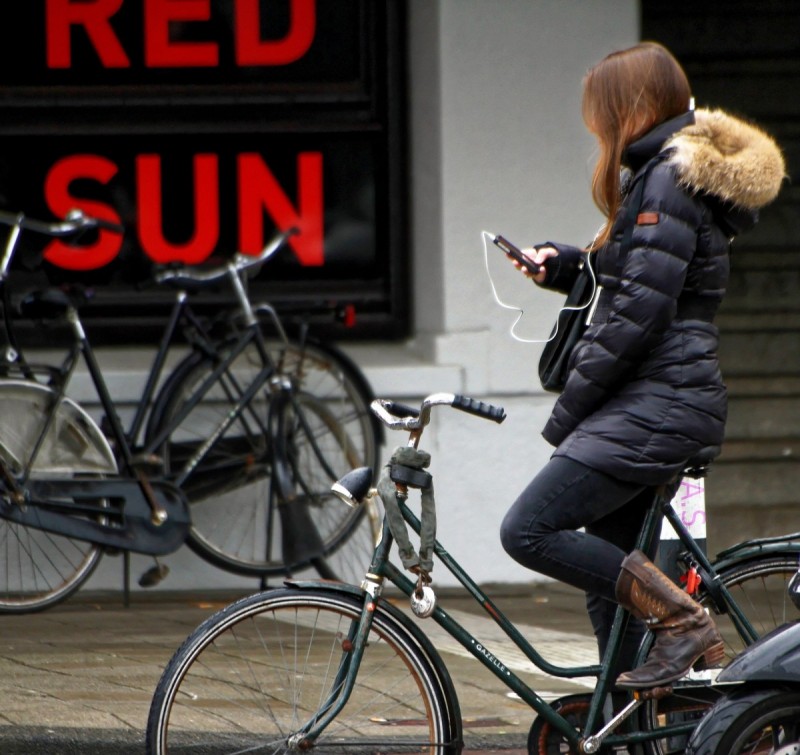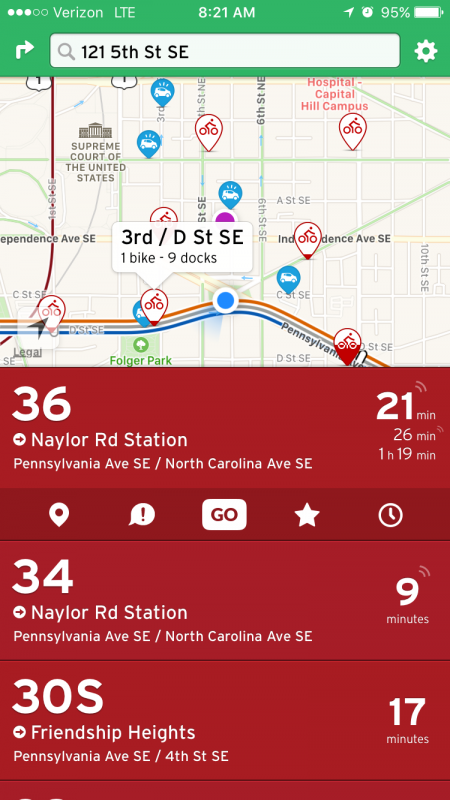With CityMapper and Transit, think beyond Google Maps to get around

Image by Pixabay licensed under Creative Commons.
Our region is one of the easiest to get around without a car. I do it every day thanks in large part to a new generation of smart phone apps that take the stress and uncertainty out of plotting a route, reading schedules, and connecting to other services. I’ve become something of an evangelist for two in particular – CityMapper and Transit.
The elevator pitch for both is that they’re all-in-one: meaning you can easily see every local and regional transit option plus complementary services like Capital Bikeshare, Car2Go, and even Uber and Lyft. Both apps show real-time arrivals, departures, and availability. All you do is tap which mode of transportation you want and you get a step by step plan for your trip.
This post isn’t meant to be an endorsement of any specific app – search around and find what works for you. And Google Maps certainly has its uses, like turn-by-turn directions and traffic updates.
But here’s a quick breakdown of why apps like CityMapper and Transit make for smooth transportation experiences:
Real-time tracking: Even the occasional transit rider knows that posted schedules are often unreliable and sometimes completely useless. CityMapper and Transit use GPS tracking and other tools to make sure arrivals and departures are as accurate as possible – so you know exactly when to leave the house to catch the bus. GPS predictions aren’t always 100% reliable either, but they’re way better than relying on the posted schedule like Google Maps still does.
Combine services and modes: The best way from A to B isn’t always a straight line. Maybe you need to combine bus and rail, or use bikeshare for that last-mile connection. Maybe Metro is woefully delayed and you want to check out regional buses or commuter rail. Whatever the trip, these apps combine every possible option and provide you a menu of choices. Again, you can even see real-time Uber, Lyft, and Car2Go availability and estimated pricing if transit isn’t cutting it.
Bike better: One of my favorite features is that these apps automatically incorporate Capital Bikeshare, including real-time availability of bikes and docks. Planning a trip on your own bike is an option, too. CityMapper even sorts bike routes by “Quiet,” “Regular,” and “Fast” so you can adjust for your comfort level.
See what’s nearby: If you just want to see what buses and trains are coming or how many bikes are at the nearest dock, you can quickly pull up your surroundings and take a look. The Transit app is particularly good for this.
Bonus features: You can add widgets to your home screen, set your commute for automatic morning and evening updates, track your calories burned and carbon saved, and more. Personally, I love CityMapper’s buttons that simply say “Get Me Home” and “Get Me to Work” so my morning and evening commute options are pre-loaded for me.
Google Maps is the go-to, but it’s not the best
Despite these great apps, I often see transit-savvy commenters on places like GGWash and the DC subreddit recommending Google Maps for residents and visitors alike. But for many if not most trips, there are simply better options.
I don’t mean to pick on Google – the company literally invented the system (GTFS, now called the General Transit Feed Specification, but guess what “G” stood for initially) that led the way in real-time transit trip planning.
It’s just that newer apps have more and better tools available for car-free trips: features like real-time bus and train tracking, multimodal and multi-operator trip planning, and seamless integration of complementary services like bikeshare.
To illustrate, here’s a comparison using a real-world scenario
Today, I’m meeting friends after work for a happy hour in NoMa. My office is in Navy Yard. My default assumption is to take Metro from Navy Yard to Chinatown and transfer to the Red Line, but I decide to check my phone to see if another option is better. (Maybe this exact situation doesn’t apply to you, but I’m sure you can think of times when you want to consider a bunch of options quickly.)
Scenario 1: I open up Google Maps to see my options. After tapping on the transit icon, I see that indeed, Green Line to Red Line is the recommended option. So I pull up Metro Hero to check the next train departure – can I stop for coffee first, or should I hurry? Uh oh – I see that due to a track problem at Mt. Vernon Square, “expect residual delays.” Back to Google to check the bus options. I see that I could walk over to 8th Street to catch the 90/92, but there’s no indication of when the next one will arrive.
You get the idea – I could pull up a separate Capital Bikeshare app to check availability there, then go back to Google Maps to plan my route, but I think you’ll find that Scenario 2 makes things easier.
Scenario 2: I open CityMapper and enter my destination. I see a screen with Metrorail, Metrobus, Capital Bikeshare, and more, plus a map where I can quickly tap on different stops or stations to see what’s coming. The residual delays on the Green/Yellow lines are noted prominently. Since it’s a nice day and there’s plenty of availability, I decide to grab a bikeshare, and the app has turn-by-turn directions queued up for me. Much better!
CityMapper in action. Image by the author.
In the end, despite some recent improvements, companies like Google and Apple make the default assumption that you’re driving yourself, and their transit planning is usually based on schedules rather than GPS. If your trip is within the DC/Baltimore region, chances are that something like CityMapper or Transit is better suited. (They work in other places too, once you get there – just don’t rely on them for long inter city trips.)
The great thing about transportation apps is they’re always improving
The future of the field is exciting – already, Boston’s MBTA has partnered with Transit to see how its customers are actually using the system, and CityMapper recently launched its own “pop-up bus” in London to test some new concepts. As agencies like WMATA continue to explore on-demand service models, it’s very likely that the future of transit will involve seamless multimodal connections facilitated by mobile apps and the Internet of Things.
In some ways, we’re already there, but there’s still a ways to go. Moving forward, unified mobile fare payment would be a major step to help knit the region even closer together and make paying for trips – even across services and boundaries – as simple as it currently is to plan them.
In the meantime, the information we have at our fingertips makes going car-free or car-lite much less of a hassle than it used to be. When you know exactly where and when you need to show up, riding transit fits right in our increasingly on-demand world.

